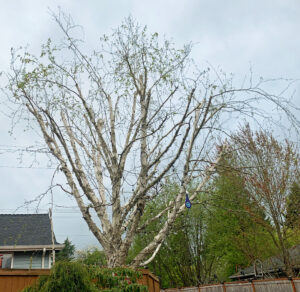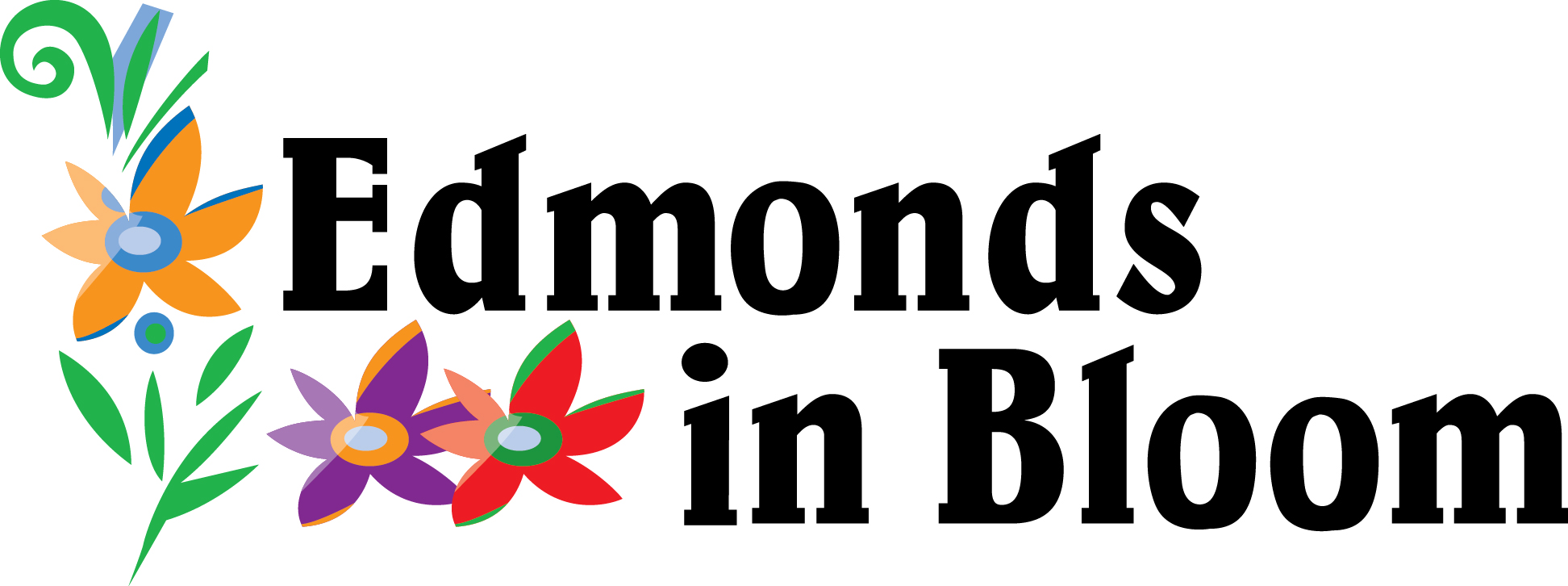Warning Local Birch Tree Owners!
What is Killing My Edmonds Birch Trees?
You may have noticed many of the local birch trees with crowns dying off. Edmonds Birch trees that are stressed can succumb to the Bronze Birch Borer (BBB) which can kill a birch tree within two years.
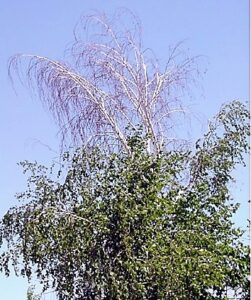
Bronze Birch Borer (BBB)
The BBB typically attacks trees which are already stressed or in decline. There has been an increase in stressed birch trees and thus prone to Bronze Birch Borer due to climate change with our recent hot, dry summers. A birch infested with Bronze Birch Borer will start showing die back in the crown. The infestation increases in severity, often leading to death of the tree.
The BBB has become a major pest in our state and generally, the white-barked birches are more susceptible . Larvae damage trees by feeding on the phloem (the inner bark) and the cambium (the growth layer producing both phloem and xylem). Repeated attacks and the construction of numerous galleries by larvae eventually disrupts nutrient transport, killing roots. The damaged root system of an infested tree can’t supply leaves with adequate water and branches die, further reducing the ability of the tree to produce food and transport nutrients. Most often, the end result is a dead tree.
Bronze Birch Borers are greenish/brown in color with a bronze reflection. Adults are about half an inch long with females being slightly larger. The more destructive larvae form of this insect are creamy white and grow to be an inch long. The Larvae hatch from eggs laid 10 days prior on the surface of the tree and they bore into the branches or trunk. Both the adults and the larvae are hard to find since they spend most of their life inside the tree.
Larvae feed on interior tissue just under the bark and form tunnels and burrows. Often the tunnels are very crooked, cross and recross. They remain active until fall and overwinter in cells constructed at the end of their tunnels. The following spring, the larvae pupate and emerge as adult beetles through small D-shaped holes that are cut in the bark.
-
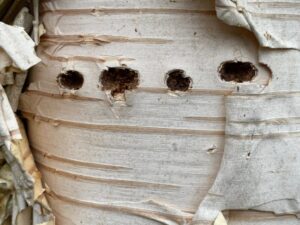
Holes by Birch Borer
-
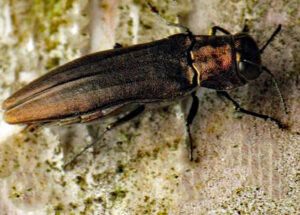
Birch Borer Adult
Birch Borer Adult
Healthy trees can be attacked, but larvae rarely succeed in completing development. A healthy tree will produce callus tissue around the feeding gallery of a larval birch borer. If the callus can be produced quickly, the larva will be overtaken and die. If the tree is stressed, however, callus production will be too slow to prevent the larva from expanding its gallery and completing its development.
Treatment of Edmonds Birch Trees
Treatment would include pruning off your sick or dying limbs and burning them to prevent the spread of the BBB. Pruning should be done in late fall or winter since pruning in spring or summer can attract adult BBB to lay eggs on the wounds. If pruning must be done in spring or summer, insecticide should be applied on those areas. Pruning improves the appearance of the tree but has a lesser impact on the tree recovery and will not dramatically decrease the number of borers in the tree.
Sufficient water is probably the single most important factor in maintaining a healthy birch tree and recovery of a weakened tree. If rainfall is insufficient, supplemental watering may become necessary. During the growing season a slow (2-3 hours), deep (8-18 inches) watering once per week is a general rule for maintaining adequate soil moisture. Infrequent, light waterings are not recommended. Laying a hose on the ground and allowing it to run slowly over the root zone is a very good technique for ensuring adequate watering.
Carbaryl is a non-systemic insecticide that can be applied to the bark of trees to prevent new attacks. Thorough coverage of branches and the main stem is required. This treatment will not kill insects already under the bark. However, it will help prevent new attacks. It is recommended you do three applications with registered chemicals. Best time is in June and July in 2-3 week intervals during the period when adult beetles emerge. For larger trees it is recommended to use a licensed operator that can use high pressure sprayers or injection methods.
Systemic insecticides such as imidacloprid or dinotefuran, can be applied as a tree injection, soil injection, or soil drench. They are effective in controlling larvae feeding inside the tree. Tree injection products are only available to professional applicators.
There is Hope
The long term prognosis for Edmonds birch trees that are treated early (i.e., before vascular injury) is very good to excellent. Your tree recovery from an established infestation is relative to the severity of the infestation at the time of treatment. Along with continued periodic chemical treatment, you can maintain the health of the tree by following a regular schedule for fertilization and watering.
Before and After
Prior to treatment, our birch tree was losing more and more of the crown and center of the tree. The symptoms started a year prior during a dry summer whereby the entire tree was weakened and wilting during the dry summer. During weakened state was when the BBB took residence in the tree and spread due to a weakened defense system with less callus produced to encapsulate the feeding galleries.
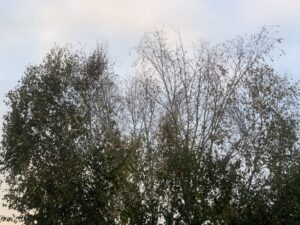
We hired a local arborist to trim the crown and shape the tree and they removed a bit more than a third of it. We then hired a local tree service that does a systemic injection of Imidaclopride to the trees in the dormant season to help prevent BBB damage. This treatment should be repeated every two years as it makes the birch tree less attractive to BBB and targeting/repelling the larvae currently in the tree.
